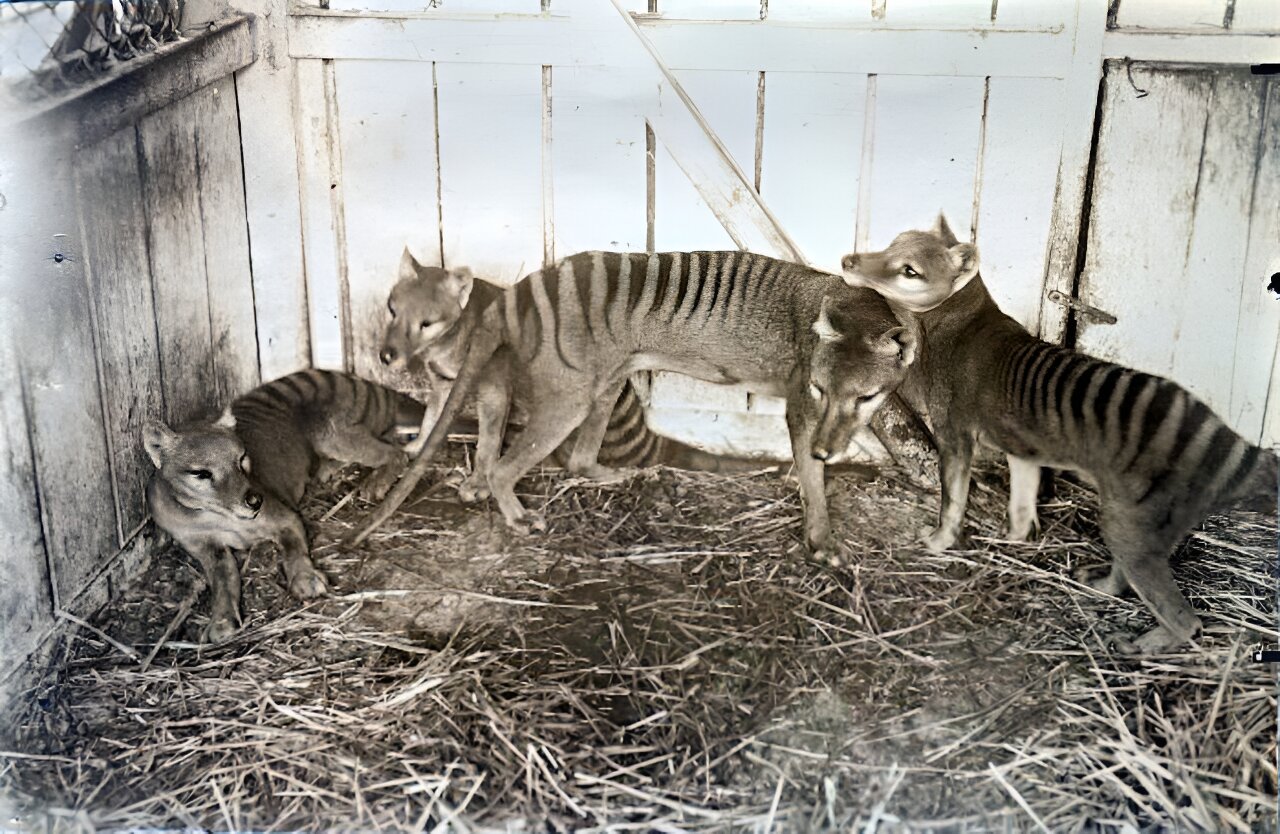While the thylacine may resemble wolves and dogs in appearance, it is important to note that these carnivorous marsupials, which once roamed the lands of Australia and New Guinea prior to human settlement, belong to a different lineage. Roughly 3,000 years ago, they became confined to Tasmania. The arrival of European colonists marked the beginning of their decline, as the introduction of farming, diseases, and hunting bounties led to their eventual extinction. The last confirmed thylacine perished on September 7, 1936, at the Beaumaris Zoo in Hobart, Tasmania. In commemoration of this loss, September 7th is now recognized as National Threatened Species Day in Australia, bringing attention to the importance of conservation efforts.
Despite the resemblance between thylacines and canids, scientifically referred to as the evolutionary convergence phenomenon, it has been a challenge to determine whether thylacine brains share similarities with their wolf counterparts, largely due to a lack of available material for microscopic examination. However, in a newly published study, I collaborated with my esteemed colleagues to upload high-resolution images of thylacine brain sections to a public repository. These sections were derived from a thylacine specimen that succumbed to its fate in the Berlin Zoo back in 1880.
Regrettably, only limited information about this particular specimen was accessible, as crucial details such as its sex and body weight were lost, most likely during the tumultuous periods of both World Wars. Nevertheless, researchers who recognized the biological significance of these samples ensured their preservation, with early custodians including German scientists Oskar and Cecile Vogt. Their extensive privately owned brain sample collection ultimately became part of the Kaiser Wilhelm Institute for Brain Research in 1914. Oskar Vogt, the esteemed director of the institute, who had also meticulously studied Lenin’s brain, along with his wife Cecile, fled from Nazi persecution in 1937. The institute eventually transformed into the Max Planck Institute for Brain Research, relocating to Frankfurt in 1962. It was there that the late neurobiologist Heinz Stephan entrusted the thylacine material to John Nelson from Monash University, a co-author of this pioneering study, in 1973, ensuring its return to Australia. Presently, the original samples are safely held in CSIRO’s Australian National Wildlife Collection situated in Canberra.
So, what did our analysis of these extraordinary samples reveal? Overall, we observed that the thylacine brain exhibits greater resemblance to its carnivorous marsupial relatives, known as dasyurids, which include species like dunnarts, quolls, and Tasmanian devils, rather than wolves or other canids. Notably, the cerebral cortex, responsible for actions and environmental perception, is relatively larger in thylacines compared to other dasyurids. Additionally, the brain areas involved in olfactory processing suggest the significance of scavenging and hunting behaviors in this species. These findings emphasize that despite physical similarities, the unique brain features better illustrate the evolutionary relationships between species. As depicted in the accompanying image, the thylacine’s relatives encompass a diverse array of indigenous Australian carnivorous marsupials, including the Tasmanian tiger, Tasmanian devil, tiger quoll, numbat, yellow-footed antiechinus, and fat-tailed dunnart.
By making this valuable material readily available, we invite researchers from all walks of life to delve into the intricacies of the thylacine brain and gain further insights into this long-extinct species. Moreover, our ongoing investigations utilizing dunnarts are yielding novel perspectives on the development and evolution of mammalian brains.
The publication of this research serves as a testament to the enduring nature of scientific inquiry, as this 140-year-old thylacine brain sample, which withstood the ravages of two world wars, has finally found its way into our modern laboratory. It is with great satisfaction that we share our findings, shedding light on the wonders of a creature long gone but not forgotten.
Citation: Elizabeth Haines et al, Clade-specific forebrain cytoarchitectures of the extinct Tasmanian tiger, Proceedings of the National Academy of Sciences (2023). DOI: 10.1073/pnas.2306516120. This article is republished from The Conversation under a Creative Commons license. Read the original article here.
Denial of responsibility! TechCodex is an automatic aggregator of the all world’s media. In each content, the hyperlink to the primary source is specified. All trademarks belong to their rightful owners, and all materials to their authors. For any complaint, please reach us at – [email protected]. We will take necessary action within 24 hours.

Jessica Irvine is a tech enthusiast specializing in gadgets. From smart home devices to cutting-edge electronics, Jessica explores the world of consumer tech, offering readers comprehensive reviews, hands-on experiences, and expert insights into the coolest and most innovative gadgets on the market.


